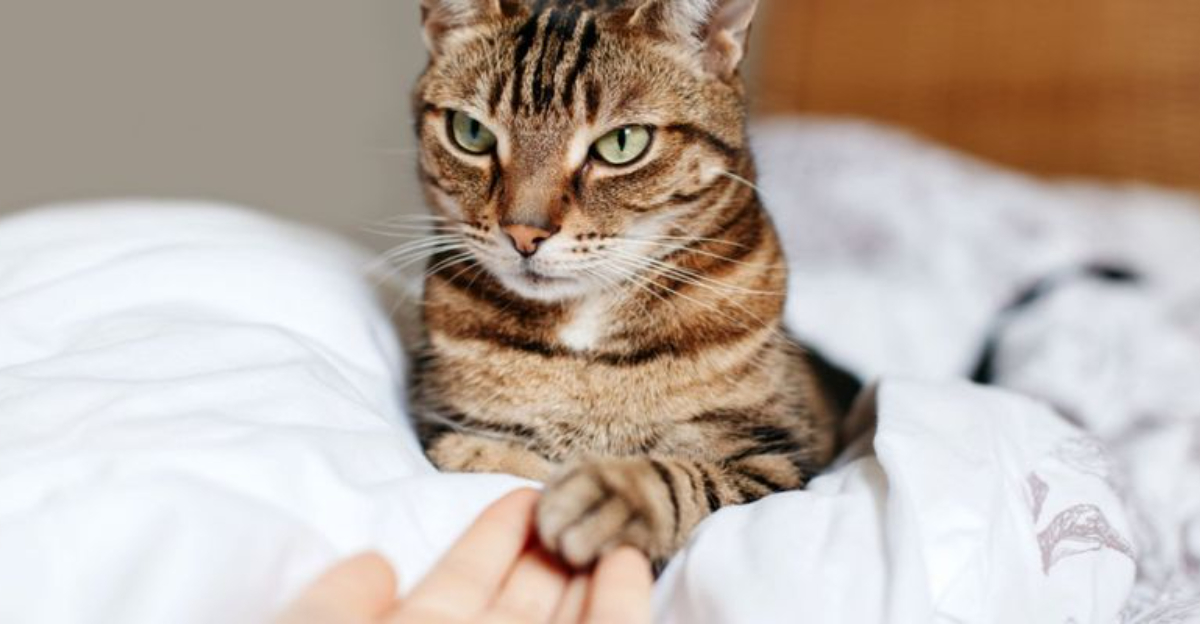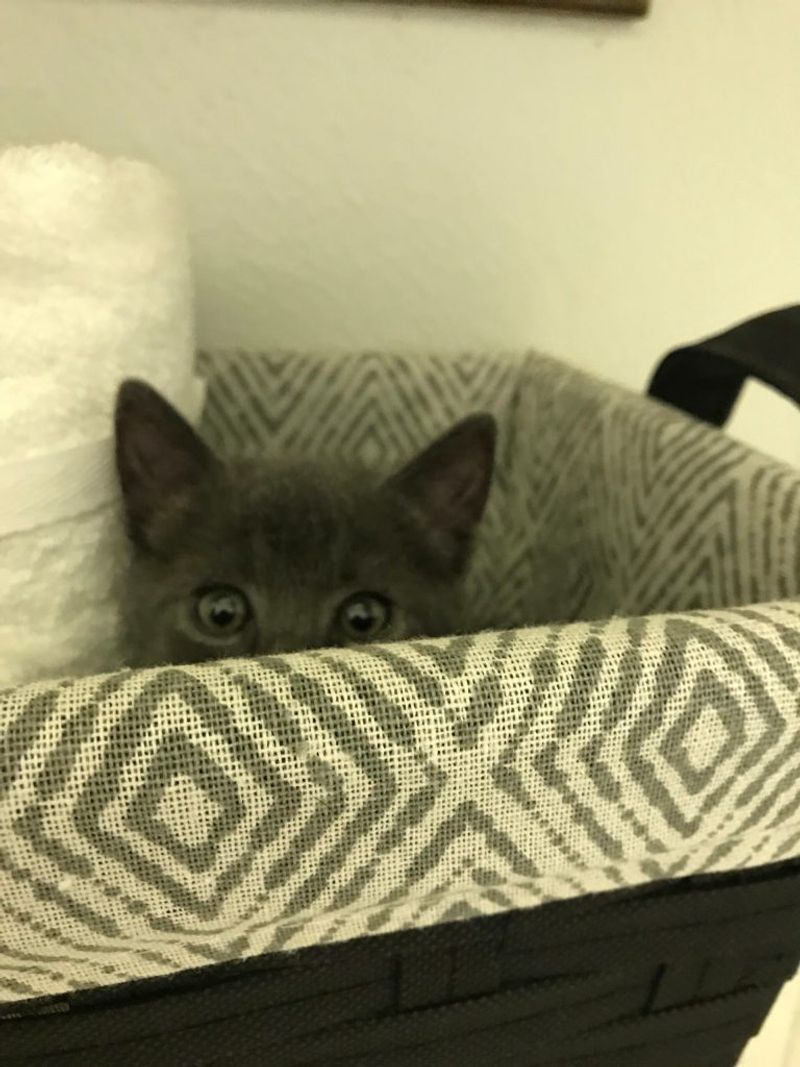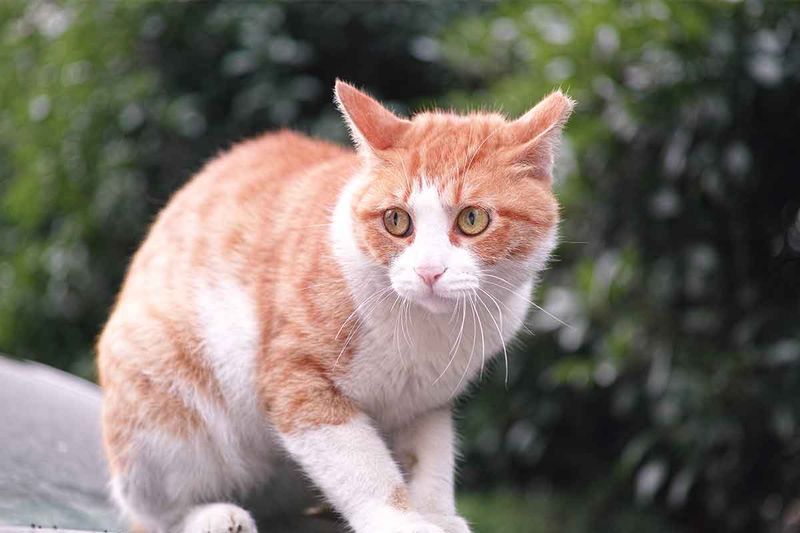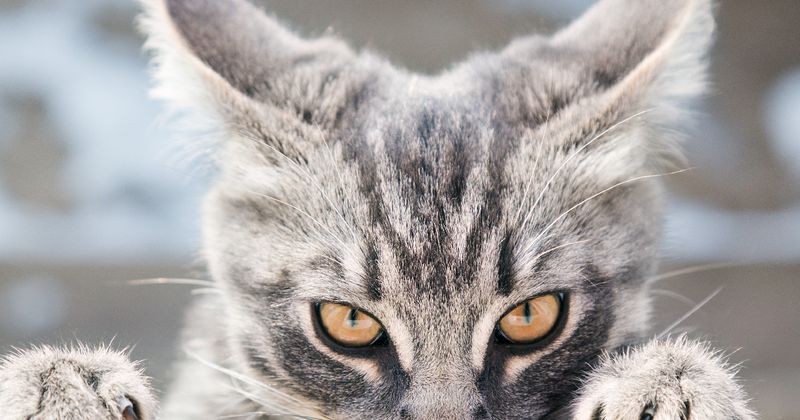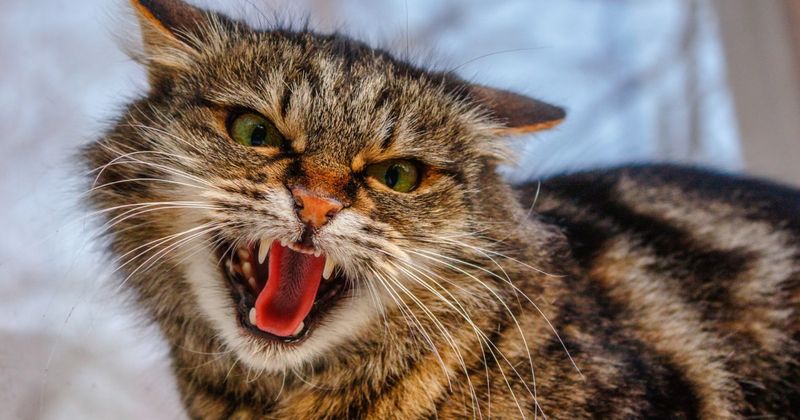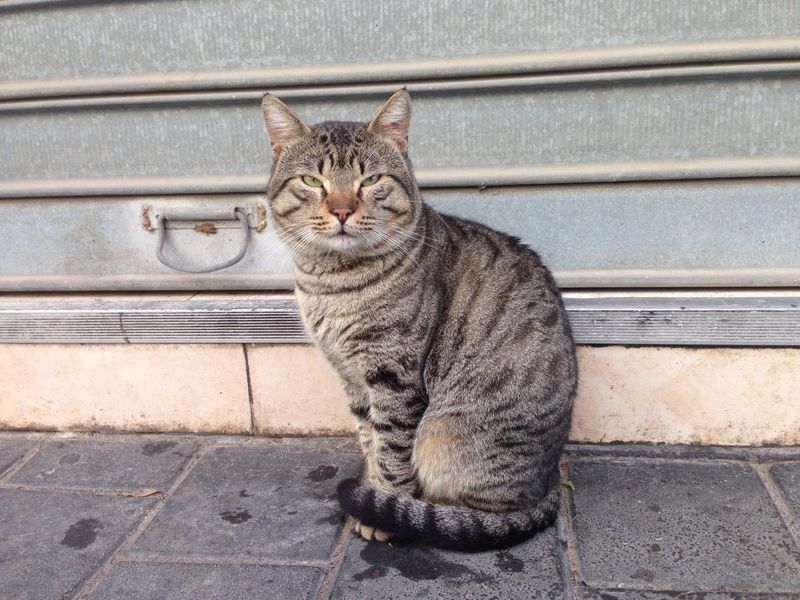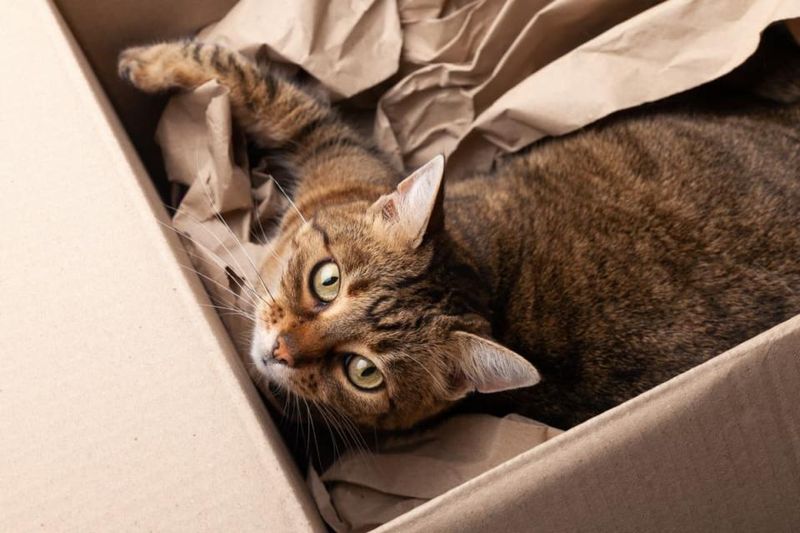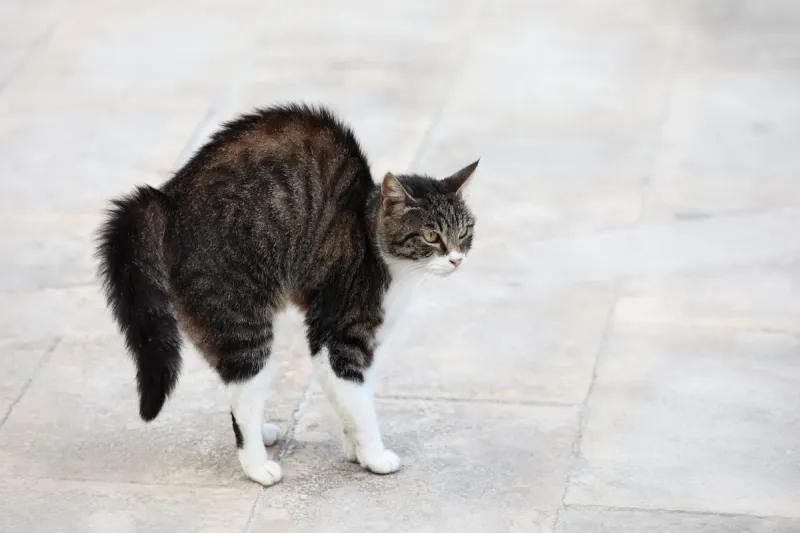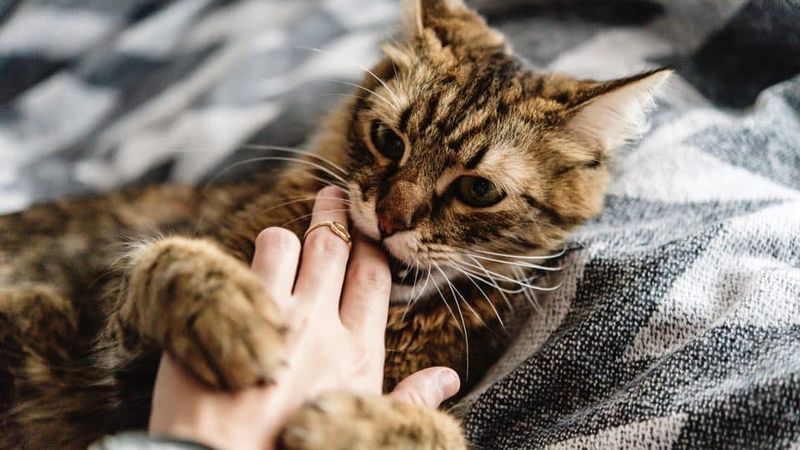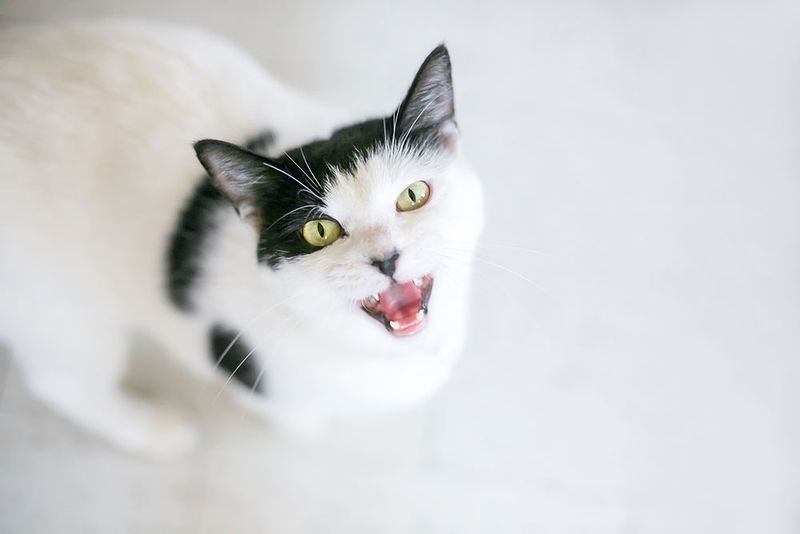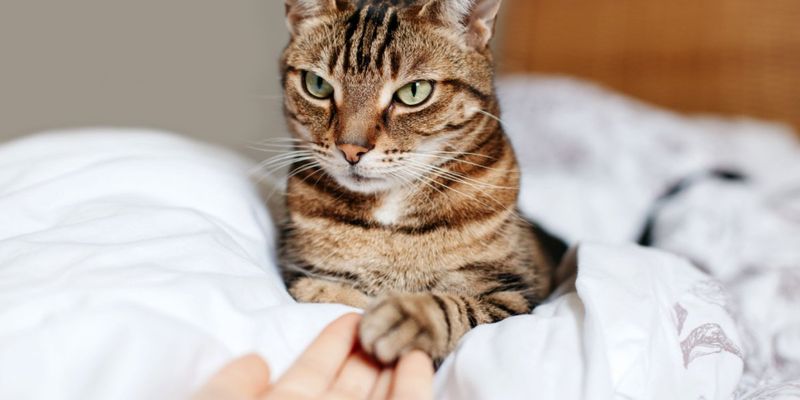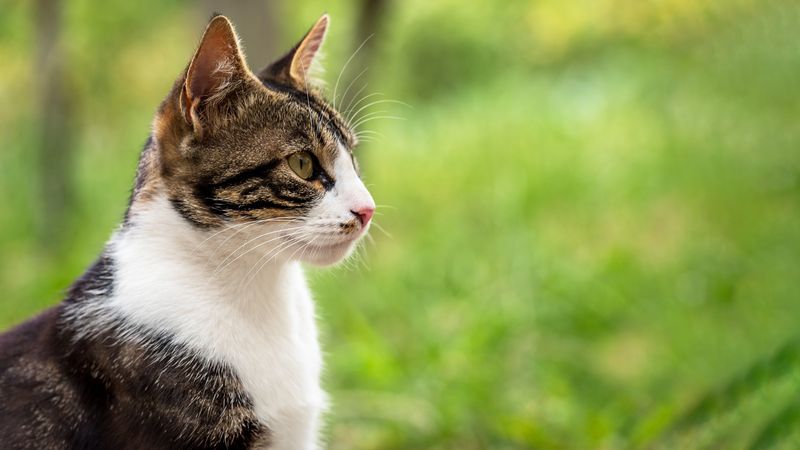📖 Table of Content:
Cats carry an air of mystery that often keeps those around them guessing. Their actions may seem subtle or puzzling, but they’re rarely without meaning. Each movement and choice reflects a deeper instinct or emotion.
Trust isn’t something most cats give away freely. It builds slowly, shaped by routine, consistency, and gentle interaction. Some cats may remain cautious for weeks or even months before letting their guard down.
Certain behaviors can signal hesitation or discomfort in a feline companion. These signs may be easy to overlook but speak volumes about the current bond. Recognizing them is the first step toward earning deeper trust.
1. Hiding Frequently
Does your cat often retreat to hidden corners? Hiding is a common instinctual behavior when a cat feels unsafe or unsure about its surroundings. A cat that hides frequently might be expressing a lack of trust in its environment or its human companions.
It’s crucial to provide safe spaces for your cat to retreat to and gently encourage social interaction. Over time, as your cat becomes more familiar and comfortable with its environment and you, this behavior might lessen.
However, patience is key. Never force a cat to come out of hiding, as it may lead to increased anxiety.
2. Avoiding Eye Contact
Cats communicate a lot through their eyes. If your cat avoids eye contact, it might be a sign that they are uncomfortable or mistrustful. In the feline world, direct eye contact can be perceived as a threat, especially if your cat is still getting to know you.
Try blinking slowly when your cat looks at you. This gesture, known as a “cat kiss,” is a non-threatening way to communicate trust and friendship.
Over time, as your bond strengthens, you’ll likely notice your cat becoming more comfortable with maintaining eye contact. Patience and understanding their body language is key.
3. Ears Pinned Back
A cat’s ears can speak volumes about their mood. Ears pinned back often indicate fear, mistrust, or discomfort in a situation. If your cat frequently displays this ear position around you, it might be a sign that they’re still wary of you or their environment.
Observe what happens before and after this behavior. It could be triggered by loud noises or sudden movements, which can be unsettling.
Creating a calm and predictable environment, along with gentle interactions, can help in gaining their trust over time. Understanding these subtle cues will aid in building a stronger bond.
4. Hissing or Growling
Hissing and growling are unmistakable signs that a cat feels threatened or uncomfortable. If your cat often resorts to these vocalizations, it could be a clear indicator of mistrust. Cats use these sounds to protect themselves and communicate their unease.
Approach with care, recognizing that your cat needs space and security. Forcing interaction can exacerbate the mistrust.
Instead, give them time to come to you when they’re ready. Respecting their boundaries is vital in nurturing a trusting relationship. With patience, these sounds may become less frequent as trust builds.
5. Tail Wrapped Tight
A cat’s tail can reveal much about their emotional state. When a cat wraps its tail tightly around its body, it may signal apprehension or insecurity. This posture protects vulnerable parts of their body, indicating they don’t feel entirely safe.
Observe your cat’s environment and interactions to identify potential stressors. Reducing these elements can help ease their anxiety.
Building trust involves providing a secure and predictable environment. Over time, as your cat learns to trust you and their surroundings, they may relax their posture, signaling growing confidence and comfort.
6. Refusing to Play
Play is a crucial part of a cat’s life, providing physical exercise and mental stimulation. If your cat shows disinterest in play, it might indicate discomfort or mistrust. A cat that trusts its environment is often more willing to engage in playful activities.
Try introducing different types of toys and observing their reactions. Sometimes a particular toy might not appeal to them, but another could pique their interest.
Patience is essential. As your cat begins to feel more at ease, they might show a greater willingness to engage in playtime, signaling growing trust.
7. Overly Defensive Posture
Raised fur and a curved spine often signal that a cat is feeling threatened or uneasy. This classic pose is their natural way of trying to protect themselves from perceived danger.
If your cat frequently exhibits this behavior, it’s essential to identify and minimize potential stressors in their environment.
Providing a calm and reassuring presence can help ease their fears. Over time, as your cat becomes more accustomed to their surroundings and gains confidence in you, these defensive displays should decrease, indicating a growing sense of trust.
8. Swatting or Biting
A quick swat or unexpected bite can be a warning sign that a cat feels unsafe. These actions typically emerge in moments of stress or excessive stimulation.
If your cat frequently resorts to swatting or biting, it’s crucial to approach them with caution and respect their space. Understanding their limits and providing a safe, calm environment can help reduce these behaviors.
As trust builds, your cat may become more relaxed and less prone to defensive actions. It’s a gradual process, but with time and patience, these behaviors can diminish, reflecting a stronger bond.
9. Vocalizing Excessively
Excessive vocalizing can be a sign of distress or insecurity in cats. If your cat frequently meows or yowls, it might be their way of expressing discomfort or seeking reassurance.
Observe when and where these vocalizations occur to identify possible triggers. Addressing these can help ease their anxiety.
Providing a consistent routine and a calming environment can help your cat feel more secure. As trust develops, you may notice a decrease in excessive vocalizations, indicating a more relaxed and confident cat.
10. Avoiding Physical Contact
Reluctance to be touched often points to a lack of trust in a cat-human relationship. Cats who are still unsure may pull away from petting or resist being held.
Building trust requires patience and understanding. Allow your cat to approach you on their terms, and avoid forcing physical interaction.
Providing a safe and comfortable environment can gradually help them feel more at ease. Over time, as they learn to trust you, your cat may become more open to physical affection, signaling that their trust is growing.
11. Keeping Distance
When a cat chooses to stay away, it may be signaling discomfort or uncertainty. This behavior often appears when they’re adjusting to a new space or unfamiliar faces.
Giving your cat the space they need without forcing interaction is crucial. Let them come to you when they’re ready.
Encouraging familiarity through consistent routines and gentle interactions can help bridge the gap. As your cat becomes more comfortable, you’ll likely find them venturing closer and spending more time in your company, indicating a growing sense of trust and comfort.
